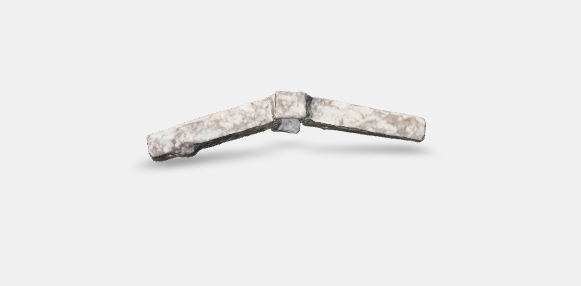Stone anchor stock. Fractured. Trapezoid, beveled and rounded shape, with a central, well-squared recess. One arm missing.
The artefact presents elements of heavy fouling by epilithic organisms. In particular, these are Polychaeta serpulidae (sea worms) that, with their characteristic calcareous tubes, form whiteish encrusting elements (see figure). In some parts of the artefact, there are fouling elements caused by thalli of red algae (Corallinaceae) and colonies of Bryozoans. The anchor stock is heavily bio-eroded by endolithic organisms (capable of boring actively in a rock), particularly boring sponges from the family Clionaidae.

Boetto G. 1997, Ceppi litici “sacri” e culti aniconici a Metaponto e a Locri, in Archeologia Subacquea II, pp. 51-64.
Gianfrotta P.A. 1975, Le ancore votive di Sostrato di Egina e di Faillo di Crotone, in La Parola del Passato, 30, pp. 311-318.
Gianfrotta P.A. 1977, First elements for the dating of stone anchors stocks, in IJNA VI, pp. 285-292.
Gianfrotta P.A. 1982, L’ancora di Klutikuna (ovvero, considerazioni sulla tomba 245 di Valle Trebba), in Bollettino dei Musei Ferraresi 12, pp. 59-62.
1 For a review of the most known anchor stocks, see GIANFROTTA 1975; Id. 1977 and ID. 1982. On some stone anchor stocks found in Metapontum and Locris (used by devotees during rites), see BOETTO 1997, pp. 51 and ff.



